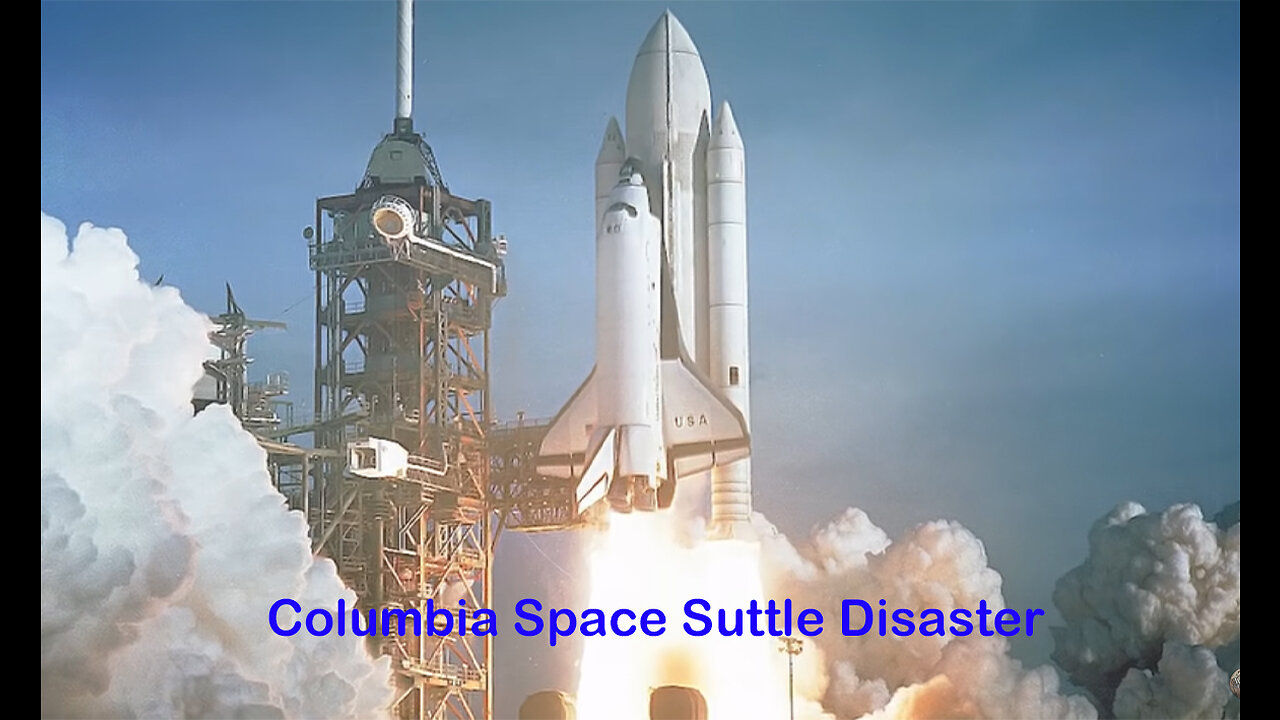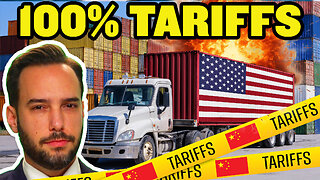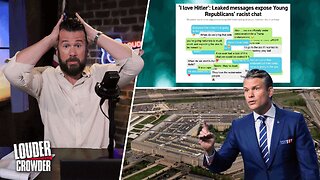Premium Only Content

Columbia Space Suttle Disaster
January 28th, 1986 at 11:39am EDT - The Space Shuttle Challenger Explodes on its 10th flight during mission STS-51-L. The explosion occurred 73 seconds after liftoff and was actually the result of rapid deceleration and not combustion of fuel.
The Space Shuttle Challenger disaster was a fatal accident in the United States' space program that occurred on January 28, 1986, when the Space Shuttle Challenger (OV-099) broke apart 73 seconds into its flight, killing all seven crew members aboard. The mission carried the designation STS-51-L and was the tenth flight for the Challenger orbiter and twenty-fifth flight of the Space Shuttle. The spacecraft disintegrated over the Atlantic Ocean, off the coast of Cape Canaveral, Florida, at 11:39 a.m. EST (16:39 UTC).
The disaster was caused by the failure of the two redundant O-ring seals in a joint in the Space Shuttle's right solid rocket booster (SRB). The broken seals caused a breach in the joint shortly after liftoff, which allowed pressurized gas from within the SRB to burn through the wall to the adjacent external fuel tank. This led to the separation of the right-hand SRB's aft attachment and the structural failure of the external tank. Following the explosion, the orbiter, which included the crew compartment, was broken up by aerodynamic forces.
The crew compartment and many other vehicle fragments were recovered from the ocean floor after a three-month search and recovery operation. The exact timing of the deaths of the crew is unknown; several crew members are known to have survived the initial breakup of the spacecraft. By design, the orbiter had no escape system, and the impact of the crew compartment at terminal velocity with the ocean surface was too violent to be survivable.
The disaster resulted in a 32-month hiatus in the Space Shuttle program and the formation of the Rogers Commission, a special commission appointed by United States President Ronald Reagan to investigate the accident. The Rogers Commission found that issues with NASA's organizational culture and decision-making processes had been key contributing factors to the accident. Test data from as early as 1977 had revealed a potentially catastrophic flaw in the SRBs O-rings, but this was not addressed or corrected by NASA or Morton Thiokol. NASA managers also disregarded warnings from engineers about the dangers of launching in cold temperatures and did not report these technical concerns to their superiors. As a result of the disaster, NASA established the Office of Safety, Reliability and Quality Assurance to better address safety concerns within the organization. Additionally, commercial satellites would subsequently be launched on expendable launch vehicles rather than deployed from the crewed orbiter. To replace Challenger, construction of Endeavour was approved in 1987, and it first flew in 1992. Subsequent Space Shuttles launched with redesigned SRBs, and crews wore pressure suits during ascent and reentry.
-
 LIVE
LIVE
Darkhorse Podcast
2 hours agoThe 296th Evolutionary Lens with Bret Weinstein and Heather Heying
256 watching -
 LIVE
LIVE
Jeff Ahern
46 minutes agoNever Woke Wednesday with Jeff Ahern
109 watching -
 1:24:59
1:24:59
Sean Unpaved
3 hours agoPrime Pulse: Yamamoto's Gem, Mendoza & Simpson's Title Quest, & NFL QB Rule Shift
14K1 -

The Shannon Joy Show
4 hours agoCharlie Kirk Killing Exploited For Trump’s Everything War - Insurrection Against The Constitution
18.1K11 -
 10:54
10:54
Midwest Crime
2 hours agoTrain Platform Killer Caught on Camera
57 -
 10:02
10:02
China Uncensored
2 hours agoChina Has LOTS of Regret
4686 -
 30:39
30:39
The Boomer Effect
3 hours agoBurnout Is Not a Badge: Redesign Your Life
4 -
 1:59:46
1:59:46
Steven Crowder
5 hours ago251 Racist Slurs: Politico's Bombshell Leak is a Massive Nothingburger
326K294 -
 1:03:44
1:03:44
DeVory Darkins
3 hours ago $25.20 earnedDemocrats are PANICKING over SCOTUS hearing as Young Republicans chat group explodes
75.8K58 -
 2:54:42
2:54:42
Side Scrollers Podcast
4 hours agoEA BANNING “MAGA” Usernames? + Roblox CP Situation Gets WORSE+ CollarGate + More | Side Scrollers
18.5K12